new posts in all blogs
Viewing: Blog Posts Tagged with: Featured Books, Most Recent at Top [Help]
Results 1 - 12 of 12
How to use this Page
You are viewing the most recent posts tagged with the words: Featured Books in the JacketFlap blog reader. What is a tag? Think of a tag as a keyword or category label. Tags can both help you find posts on JacketFlap.com as well as provide an easy way for you to "remember" and classify posts for later recall. Try adding a tag yourself by clicking "Add a tag" below a post's header. Scroll down through the list of Recent Posts in the left column and click on a post title that sounds interesting. You can view all posts from a specific blog by clicking the Blog name in the right column, or you can click a 'More Posts from this Blog' link in any individual post.
If you are like us, shopping is tops on your to-do list this season. Finding the perfect present can be tricky and so here are a few of our favorites that are perfect for the little reader in your family.
Snowy books for a cold winter’s day
Have you read The Mitten more times than you can count? Tuktuk: Tundra Tale by Robin Currie is a fun take on the familiar story.
 As the sun begins to set, arctic animals scurry to prepare for six months of darkness and cold. Tuktuk the collared lemming is almost ready for the long winter night – all he needs is warm fur to line his nest. When one furry kamik (boot) slips off an Inuit driver’s sled, Tuktuk is in luck! But as he drags it home, Putak the polar bear, Aput the arctic fox, and Masak the caribou eye this little lemming’s prize and want it for their own. Can Tuktuk outwit the other animals and convince them that one furry kamik is no good for anyone bigger than a lemming?
As the sun begins to set, arctic animals scurry to prepare for six months of darkness and cold. Tuktuk the collared lemming is almost ready for the long winter night – all he needs is warm fur to line his nest. When one furry kamik (boot) slips off an Inuit driver’s sled, Tuktuk is in luck! But as he drags it home, Putak the polar bear, Aput the arctic fox, and Masak the caribou eye this little lemming’s prize and want it for their own. Can Tuktuk outwit the other animals and convince them that one furry kamik is no good for anyone bigger than a lemming?
When ancient creatures are a favorite, try Wandering Woolly! Andrea Gabriel’s love of woolly mammoths blends a variety of extinct animals with a tale of getting into trouble and trusting your instincts.
 Little Woolly leaves her mother behind as she chases a toad down to the river. When the glacial ice breaks, she is swept away in the rumbling, rolling water. Now alone, the mammoth calf struggles to survive. She must sneak past cave lions, bears, saber-toothed cats and humans. Exhausted and afraid, she must even hide from stormy weather as she fights her way back to her herd. How can she find them? Will she ever get back?
Little Woolly leaves her mother behind as she chases a toad down to the river. When the glacial ice breaks, she is swept away in the rumbling, rolling water. Now alone, the mammoth calf struggles to survive. She must sneak past cave lions, bears, saber-toothed cats and humans. Exhausted and afraid, she must even hide from stormy weather as she fights her way back to her herd. How can she find them? Will she ever get back?
It’s a Mystery!
Whether it is a contest for the most dangerous beast in all the land or a race to find the thief, these two books will keep kids guessing until the end.
 Dangerous animals from all over the world gather for the Most Dangerous Animal of All Contest. Snakes, spiders, sharks . . . who will the winner be? Deadly poison, huge teeth, razor -sharp horns, and fearsome feet are just a few of the ways that animals kill. Predators mean to kill. Prey simply defend themselves. And yet, the unexpected most deadly-animal doesn’t mean to harm at all!
Dangerous animals from all over the world gather for the Most Dangerous Animal of All Contest. Snakes, spiders, sharks . . . who will the winner be? Deadly poison, huge teeth, razor -sharp horns, and fearsome feet are just a few of the ways that animals kill. Predators mean to kill. Prey simply defend themselves. And yet, the unexpected most deadly-animal doesn’t mean to harm at all!
 Someone stole a cake from the cake contest—who could it be? Twelve animal bakers are potential suspects but Detective Duck uses his deductive reasoning skills to “quack” the case. After all, the thief left hairs behind so the thief wasn’t a bird. Follow along as he subtracts each suspect one at a time to reveal just who the culprit was. This clever story will have children of all ages giggling at the puns and the play on words. Key phrases for educators: subtraction, deductive reasoning, animal adaptations, puns/play on words.
Someone stole a cake from the cake contest—who could it be? Twelve animal bakers are potential suspects but Detective Duck uses his deductive reasoning skills to “quack” the case. After all, the thief left hairs behind so the thief wasn’t a bird. Follow along as he subtracts each suspect one at a time to reveal just who the culprit was. This clever story will have children of all ages giggling at the puns and the play on words. Key phrases for educators: subtraction, deductive reasoning, animal adaptations, puns/play on words.
When you can’t get enough rhythm and rhyme
Head to faraway places and meet unique animals as readers sing-song their way through these two books!
 Imaginations will soar from the forest floor, up through the canopy and back down again, following the circle of life. The jungle comes alive as children learn about the wide variety of creatures lurking in the lush Amazon rainforest in this clever adaptation of the song “The Green Grass Grew All Around.” Search each page to find unique rainforest bugs and butterflies hiding in the illustrations. Delve even deeper into the jungle using sidebars and the “For Creative Minds” educational section, both filled with fun facts about the plants and animals, how they live in the rainforest and the products we use that come from the rainforest.
Imaginations will soar from the forest floor, up through the canopy and back down again, following the circle of life. The jungle comes alive as children learn about the wide variety of creatures lurking in the lush Amazon rainforest in this clever adaptation of the song “The Green Grass Grew All Around.” Search each page to find unique rainforest bugs and butterflies hiding in the illustrations. Delve even deeper into the jungle using sidebars and the “For Creative Minds” educational section, both filled with fun facts about the plants and animals, how they live in the rainforest and the products we use that come from the rainforest.
 From the “crocodile’s dentist,” to the “mongoose spa,” Animal Partners takes a whimsical look at symbiotic relationships of animals large and small. Although many animals live in groups of the same kind, here you will learn how some animals form unique partnerships with different species. After all, don’t we all need a little help from our friends?
From the “crocodile’s dentist,” to the “mongoose spa,” Animal Partners takes a whimsical look at symbiotic relationships of animals large and small. Although many animals live in groups of the same kind, here you will learn how some animals form unique partnerships with different species. After all, don’t we all need a little help from our friends?
We hope this list makes your holiday shopping easier. Visit our online store for great deals on these titles with the code HOLIDAY30.


By: Arbordale Publishing,
on 11/4/2016
Blog:
(
Login to Add to MyJacketFlap)
JacketFlap tags:
Featured Books,
Arbordale Posts,
games,
children's book,
senses,
coloring,
logic,
sudoku,
new author,
Add a tag

When you visit your favorite restaurant can you smell the food even before walking inside? Can you feel the difference between the soft fur of a puppy and the cold wet nose? If a bright red bird swoops by, can you identify what kind of bird it is just by color? Should you pay to use your senses?
That is the premise for A Case of Sense; a new book by author Songju Ma Daemicke illustrated by Shennen Bersani. The book opens with a young boy playing outside, and greedy Fu Wang has cooked wonderful Chinese dishes with the smells wafting throughout town. He announces that the townspeople must pay for the smells and when they don’t he takes everyone to court! The judge has a clever way to deal with the case and readers might use a little logical reasoning to figure out the puzzle.
Saturday, Songju will be signing at the ISLMA conference in Tinley Park, IL from 2pm-4pm. In celebration, we have a fun little puzzle in logic and sight that might keep kids coloring for a little while!

Get out the markers or the crayons and color in the missing spaces. Remember that all the colors will be rows, columns, and squares of 9 without repeating!
Download the printable PDF version!
Download the answers here!


By: Arbordale Publishing,
on 10/27/2016
Blog:
(
Login to Add to MyJacketFlap)
JacketFlap tags:
Special Days,
Featured Books,
bat facts,
Arbordale Posts,
bat books,
bat conservation,
bat habitats,
bat week,
Children's Books,
Halloween,
picture books,
Add a tag
It is Bat Week! Did you know that bats are needed to control pests, spread seeds, and pollinate plants? Scientists learn a lot about the welfare of bat populations based on the crops that they help grow. And on October 31st we may be spooked out by the nocturnal winged creatures, but did you know that they help make the chocolate in our trick-or-treat bags?
Bat week is all about helping conserve the more than 1,100 species that live on every continent except Antarctica, and Bat Conservation International has many different ways that you can help bats that live in your neighborhood. Check it out!
If you want to get the facts first, here is an Arbordale booklist that will make you go batty!
 Home in the Cave – by Janet Halfmann, illus. by Shennen Bersani
Home in the Cave – by Janet Halfmann, illus. by Shennen Bersani
Baby Bat loves his cave home and never wants to leave it. While practicing flapping his wings one night, he falls, and Pluribus Packrat rescues him. They then explore the deepest, darkest corners of the cave where they meet amazing animals—animals that don’t need eyes to see or colors to hide from enemies. Baby Bat learns how important bats are to the cave habitat and how other cave-living critters rely on them for their food. Will Baby Bat finally venture out of the cave to help the other animals?
 Little Red Bat – by Carole Gerber, illus. by Christina Wald
Little Red Bat – by Carole Gerber, illus. by Christina Wald
Red bats can hibernate or migrate to warmer regions during the winter. Should this solitary little bat stay or should she go? That’s the question the little red bat ponders as the leaves fall and the nights get colder! Some animals, such as the squirrel, tell her to stay. But what about the dangerous creatures that hunt red bats in winter? The sparrow and others urge her to go. But where? Carole Gerber takes young readers on an educational journey through one bat’s seasonal dilemma in Little Red Bat. Imaginative illustrations by Christina Wald give little red bat charm and personality, and children will be waiting and wondering what will happen next. Will the little red bat stay put or migrate south for safety and warmth?
 The Rainforest Grew All Around – by Susan K. Mitchell, illus. by Connie McLennan
The Rainforest Grew All Around – by Susan K. Mitchell, illus. by Connie McLennan
Imaginations will soar from the forest floor, up through the canopy and back down again, following the circle of life. The jungle comes alive as children learn about the wide variety of creatures lurking in the lush Amazon rainforest in this clever adaptation of the song “The Green Grass Grew All Around.” Search each page to find unique rainforest bugs and butterflies hiding in the illustrations. Delve even deeper into the jungle using sidebars and the “For Creative Minds” educational section, both filled with fun facts about the plants and animals, how they live in the rainforest and the products we use that come from the rainforest.
 Deep in the Desert – by Rhonda Lucas Donald, – by Rhonda Lucas Donald, illus. by Sherry Neidigh
Deep in the Desert – by Rhonda Lucas Donald, – by Rhonda Lucas Donald, illus. by Sherry Neidigh
Catchy desert twists on traditional children’s songs and poems will have children chiming in about cactuses, camels, and more as they learn about the desert habitat and its flora and fauna. Tarkawara hops on the desert sand instead of a kookaburra sitting in an old gum tree. And teapots aren’t the only things that are short and stout—just look at the javelina’s hooves and snout. Travel the world’s deserts to dig with meerkats, fly with bats, and hiss with Gila monsters! Whether sung or read aloud, Deep in the Desert makes learning about deserts anything but dry.
 And Coming in spring of 2017 Bat Count: A Citizen Science Story
And Coming in spring of 2017 Bat Count: A Citizen Science Story
by Anna Forrester, illus. by Susan Detwiler
Jojo is prepping for an exciting night; it’s time for the bat count! Bats have always been a welcome presence during the summers in the family barn. But over the years, the numbers have dwindled as many bats in the area caught White Nose Syndrome. Jojo and her family count the bats and send the numbers to scientists who study bats, to see if the bat population can recover. On a summer evening, the family quietly makes their way to the lawn to watch the sky and count the visitors to their farm.


By: Arbordale Publishing,
on 9/27/2016
Blog:
(
Login to Add to MyJacketFlap)
JacketFlap tags:
picture books,
Education,
animals,
children's book,
book launch,
Featured Books,
nonficiton,
Arbordale Posts,
animal legs,
Add a tag
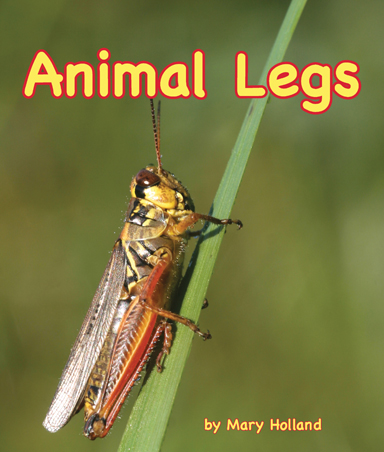
Bend your knees or jump up and down, how do you use your legs?
Compare how your legs work with the action of a frog’s legs or the webbing of an otter’s feet in Mary Holland’s new release Animal Legs. This is the third book in the Animal Anatomy & Adaptations series, and a perfect place for young readers to find amazing facts about the lives of animals found in their backyard.
We asked Mary Holland about her inspiration for Animal Legs and here is part of that interview.
A: Whose Animal Legs do you find most interesting?
MH: I’m afraid this is too hard a question to answer, as I find the many different ways that animals use their legs equally interesting. One of my favorites is a mole’s front paws. They look just like paddles to me, and the perfect tools to dig with. I also find the flap of  skin that goes from a flying squirrel’s front legs to its back legs and allows it to glide through the air a remarkable adaptation. The fact that katydid ears are on their legs is pretty amazing, too!
skin that goes from a flying squirrel’s front legs to its back legs and allows it to glide through the air a remarkable adaptation. The fact that katydid ears are on their legs is pretty amazing, too!
A: Is there an animal/fact that you wish you could have included in the book or series but it just didn’t fit?
MH: There are so many animals that have such interesting feet and legs that I can’t even begin to count them, but one group that may have the most is insects. I could only fit a few of them in the book. Grasshoppers “sing” by rubbing their legs against their wings! Have you ever looked closely at a cicada’s front legs? They are pretty scary looking! Butterflies taste with their feet!
A: What is the most unusual predicament you have faced photographing an animal?
MH: I got very close to a young skunk in order to photograph it, and before I knew it, I was covered with skunk spray.
I once was trying to find a porcupine at night that was up in a tree, screaming its head off, and suddenly it fell to the ground about three feet from me. I almost had a head full of quills!
I was tracking a bobcat in late spring that had crossed a beaver pond, and the ice, which had started to melt, gave way (I weighed a lot more than the bobcat) and I fell through the ice into the cold water with snowshoes on. Fortunately, I could touch bottom with the tips of my snowshoes and managed to get out of the pond!
A: What would you like to share with young children about your love for nature?
MH: I feel so very lucky, as each day I get to discover something new. I never know what I’m going to find. I head outdoors, and go on what is to me very much like an Easter egg hunt – I look for animals and their signs and rarely do I come home without having found something new to observe and admire.
A: What do you have coming up next?
MH: I am working on two books. One is called Naturally Curious Day by Day. It describes two or three different animals or plants that you might see each day of the year. I am also writing a book called Otis the Owl, about a young barred owl.
Otis the Owl will fly onto bookshelves in the spring of 2017.
Learn more about Mary’s new book Animal Legs on Arbordale Publishing’s website. For daily updates with amazing animal facts and photos, follow Mary’s blog Naturally Curious with Mary Holland.


By: Arbordale Publishing,
on 9/19/2016
Blog:
(
Login to Add to MyJacketFlap)
JacketFlap tags:
Children's Books,
picture books,
book release,
crocodile,
Book Launches,
children's craft,
Featured Books,
Arbordale Posts,
educational activities,
After A While Crocodile,
brady barr,
crocodile craft,
Add a tag

Do you want to spy a reptile?
This week we celebrate the release of After A While Crocodile by Dr. Brady Barr and Jennifer Keats Curtis with illustrations by Susan Detwiler.
In the book, a young girl, Alexa, raises an American crocodile with her class in Costa Rica. The story is her science journal of the experience as the crocodile hatches, grows, and swims off after he is released.
Dr. Brady Barr knew he wanted to work with reptiles after spotting his first alligator in the Florida Everglades. Since, he has traveled the world seeking out lizards, snakes, and other creatures to learn more about the 24 different species. In fact, he is the only one to have  captured all 24 species in the wild. Readers can watch Brady Barr comb the jungles, forests, and rivers seeking out reptiles on his Nat Geo Wild show Dangerous Encounters with Brady Barr that airs on Saturdays at 10:30.
captured all 24 species in the wild. Readers can watch Brady Barr comb the jungles, forests, and rivers seeking out reptiles on his Nat Geo Wild show Dangerous Encounters with Brady Barr that airs on Saturdays at 10:30.
Co-author Jennifer Keats Curtis is most often found in the wild classrooms of Maryland talking with students about animal conservation and how she helps wildlife by telling stories.
Susan Detwiler’s illustrations bring Jefe and Alexa to life with her detailed realistic style. Like Jennifer, Susan is often found in classrooms talking about her art and love for children’s books.
If you want to spy your own crocodile, a trip on a plane might be in order. Get a copy of After A While Crocodile, download the For Creative Minds section to find out where these crocs live, and educators we have a teaching guide for you too! Visit the book’s homepage for all these downloadable extras. If you just can’t wait to start the croco-fun here is a simple craft for the little ones.
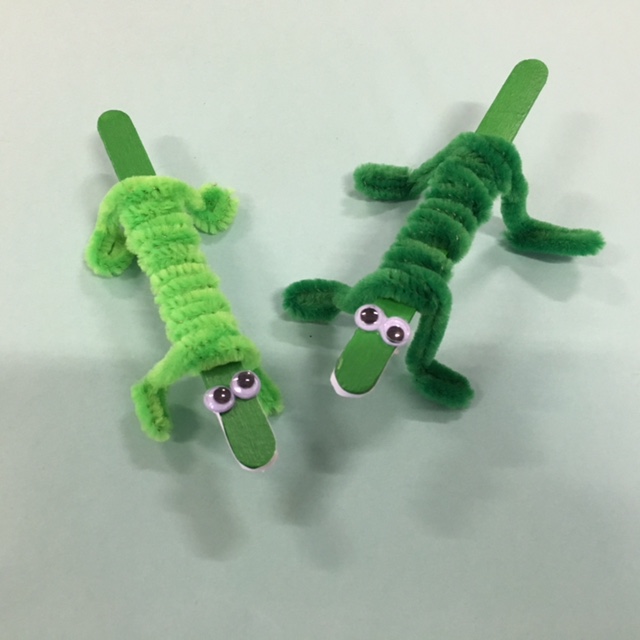
Simply use popsicle sticks and pipe cleaners. Paint the popsicle stick green, and then start in the middle and wrap one pipe cleaner toward the front leaving enough to bend for legs and feet. Then wrap the second pipe cleaner from the middle to the back, also leaving enough room for legs and feet. On the front glue googly eyes and cut teeth from some white paper and glue that to the end. Now you have a crocodile buddy!


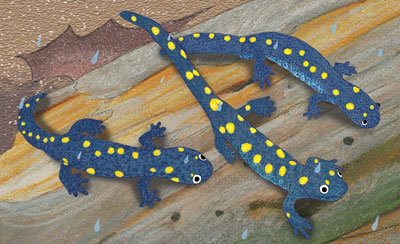
Spotted Salamanders
One amazing animal to get to know better is the salamander! Salamanders are amphibians that have long, slender bodies that are moist and smooth. Salamanders in the world vary greatly from color to size. Some have 2 or 4 legs and others have lungs or gills, or neither and breath through their skin. Others have identifiable spots that are easily seen in the night thanks to their yellow florescent spots along their backs. These spots are mostly identified with the Spotted salamander. Our book Salamander Season chronicles the journey of a colony of Spotted salamanders in the process of breeding within a vernal pool (a temporary pool of water).

Salamander egg and tadpole
For most species of salamanders, humid forests and a water source is crucial for their survival to produce offspring and to keep their skin moist. Salamanders are bred hundreds at a time and are born as tadpoles from their eggs. Over time, their bodies develop and the process of breeding in a vernal pool starts all over again.
Salamanders are generally nocturnal and keep cool during the day under rocks or trees. During the night, they go hunting for food which primarily consists of meat such as worms, slugs, and snails. Besides the main priority of most salamanders depending on humid forests and water as sources for survival, their skin also provides a source for protection. Many species of salamanders can secrete a poisonous liquid from their skin to combat enemies. Salamanders are really interesting creatures, aren’t they?
To learn more about salamanders and how other animals develop, check out these books!:
 Salamander Season One cold, rainy, spring night, a young girl and her scientist father participate in “Salamander Night” to follow hundreds of spotted salamanders as they venture into a vernal pool to mate and lay eggs. Together, the father-child team studies the salamanders through their complete amphibian metamorphosis, culminating in the adult salamanders’ disappearance into the woods in late summer. In easy-to-understand text, the girl relates the tale through her illustrated, photographic journal.
Salamander Season One cold, rainy, spring night, a young girl and her scientist father participate in “Salamander Night” to follow hundreds of spotted salamanders as they venture into a vernal pool to mate and lay eggs. Together, the father-child team studies the salamanders through their complete amphibian metamorphosis, culminating in the adult salamanders’ disappearance into the woods in late summer. In easy-to-understand text, the girl relates the tale through her illustrated, photographic journal. 
Turtles in my Sandbox Imagine finding turtle eggs in your sandbox! When a mother diamondback terrapin lays eggs in a young girl’s sandbox, the girl becomes a “turtle-sitter” to help the babies safely hatch. She raises the teeny hatchlings until they become big enough to fend for themselves in the wild. Then, with the help of experts, she releases them. Along the way, she learns about these unique animals and that she has made an important contribution to their survival. The “For Creative Minds” section includes terrapin fun facts and a turtle habitat craft.
 Turtle Summer This is a companion book to Mary Alice Monroe’s novel,Swimming Lessons, the sequel to The Beach House. In the novel, the readers witness a young mother, Toy, writing a journal for her daughter, Little Lovie. This is the journal Toy is writing. Using original photographs, this scrapbook journal explains the nesting cycle of sea turtles and the natural life along the southeastern coast, including local shore birds, shells, and the sea turtle hospital. Adults and children will enjoy the images, information and the journal with or without the novel.
Turtle Summer This is a companion book to Mary Alice Monroe’s novel,Swimming Lessons, the sequel to The Beach House. In the novel, the readers witness a young mother, Toy, writing a journal for her daughter, Little Lovie. This is the journal Toy is writing. Using original photographs, this scrapbook journal explains the nesting cycle of sea turtles and the natural life along the southeastern coast, including local shore birds, shells, and the sea turtle hospital. Adults and children will enjoy the images, information and the journal with or without the novel.


By: Arbordale Publishing,
on 9/29/2015
Blog:
(
Login to Add to MyJacketFlap)
JacketFlap tags:
Sounds of the Savanna,
book recomendation,
giraffe noise,
The Giraffe Who Was Afraid of Heights,
kids books,
Educational,
giraffe,
Teaching moments,
Featured Books,
science news,
Add a tag
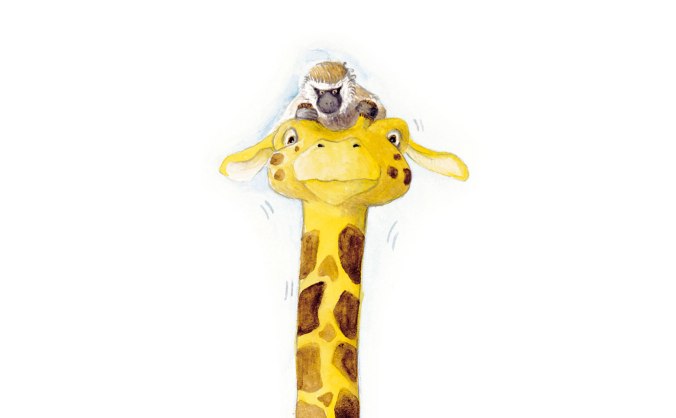
Did you know that giraffes, often a very quiet animal, hum in their sleep late at night? Zookeepers involved in the study were even surprised that researchers picked up a low humming noise from their giraffes.
Researchers spent hundreds of hours recording sounds in the giraffe’s enclosures and in each zoo at least one giraffe was separated from the herd.
Although the sound recordings tell us that giraffes do have more vocalization than the grunts and sneezes that keepers hear during the day, now scientists may go further to understand if this is a communication method or if it is involuntary like snoring or talking in your sleep.
Hear the giraffe’s hum and learn more about the study here.
Do you want to learn more about giraffes, or animal sounds? Here are two Arbordale books that would be a great start on the topic!
The Giraffe Who was Afraid of Heights
 Imagine if the one thing that keeps you safe is what you fear the most. This enchanting story tells of a giraffe who suffers from the fear of heights. His parents worry about his safety and send him to the village doctor for treatment. Along the way he befriends a monkey who is afraid of climbing trees and a hippo who is afraid of water. A life-threatening event causes the three friends to face and overcome each of their fears. The “For Creative Minds” section includes fun facts and animal adaptation information, a match-the-feet game and a mix-n-match activity.
Imagine if the one thing that keeps you safe is what you fear the most. This enchanting story tells of a giraffe who suffers from the fear of heights. His parents worry about his safety and send him to the village doctor for treatment. Along the way he befriends a monkey who is afraid of climbing trees and a hippo who is afraid of water. A life-threatening event causes the three friends to face and overcome each of their fears. The “For Creative Minds” section includes fun facts and animal adaptation information, a match-the-feet game and a mix-n-match activity.
Sounds of the Savanna
 From the first light of dawn until the sun sets at night, the savanna is alive with noise. A lion roars in the early morning, a young baboon shrieks to warn others of danger at noon, and a young mouse squeals at dusk. What are the animals saying and why? Animals communicate in many ways; explore the thriving African savanna as its inhabitants “talk” to one another throughout the course of a day.
From the first light of dawn until the sun sets at night, the savanna is alive with noise. A lion roars in the early morning, a young baboon shrieks to warn others of danger at noon, and a young mouse squeals at dusk. What are the animals saying and why? Animals communicate in many ways; explore the thriving African savanna as its inhabitants “talk” to one another throughout the course of a day.
And…Look forward to next year when we see what really happens at night in the zoo! Midnight Madness at the Zoo coming February 2016!
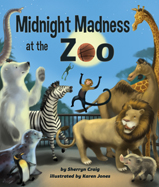


By: Arbordale Publishing,
on 7/8/2015
Blog:
(
Login to Add to MyJacketFlap)
JacketFlap tags:
Featured Books,
arbordale books,
Catherine Ciocchi,
landforms,
peninsulas,
Children's Books,
travel,
kids books,
Educational,
mountains,
plains,
islands,
this land is your land,
valleys,
volcanoes,
Add a tag
Are you looking for a fun family trip this summer? Don’t want to travel too far from home? This Land Is Your Land talks about many different landforms all over the United States. Read this book with your children to teach them about the diverse landscapes of our beautiful country, then pack up the car and head to the nearest (or farthest!) destination. Who says education has to stop in the summer?
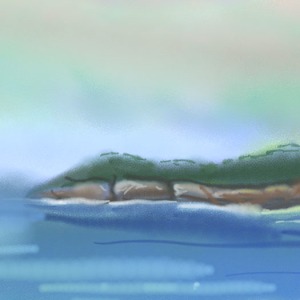 Coastlines: Perhaps the easiest landform to reach for many, the United States coastline is over 95,000 miles long. Many people live on the coast – about 39% of the country’s population! The coast is a very popular tourist destination, and there are hundreds of beaches for people to travel to. Some of the best family beaches are located in the Outer Banks in North Carolina; Maui, Hawaii; Myrtle Beach, South Carolina; Destin, Florida; San Diego, California; and Ocean City, Maryland. There are beaches in every coastal state, though. Which beach is closest to you?
Coastlines: Perhaps the easiest landform to reach for many, the United States coastline is over 95,000 miles long. Many people live on the coast – about 39% of the country’s population! The coast is a very popular tourist destination, and there are hundreds of beaches for people to travel to. Some of the best family beaches are located in the Outer Banks in North Carolina; Maui, Hawaii; Myrtle Beach, South Carolina; Destin, Florida; San Diego, California; and Ocean City, Maryland. There are beaches in every coastal state, though. Which beach is closest to you?
Mountains and hills: Mountains are also another popular place for tourists, especially those who enjoy activities such as hiking and  camping. Some states have more to offer than others when it comes to mountains. For example, the highest point in Florida is only 345 feet above sea level, whereas Alaska’s Mt. McKinley towers 20,320 feet above sea level. However, all 50 states have some sort of forest, lake, or other natural area where camping and nature walks are possible, so even those of you in the flatter states don’t have to miss out!
camping. Some states have more to offer than others when it comes to mountains. For example, the highest point in Florida is only 345 feet above sea level, whereas Alaska’s Mt. McKinley towers 20,320 feet above sea level. However, all 50 states have some sort of forest, lake, or other natural area where camping and nature walks are possible, so even those of you in the flatter states don’t have to miss out!
Plateaus and canyons: In the United States, plateaus are found mainly in the western states, where the Colorado Plateau is. Plateaus provide opportunities for hiking and climbing, and the Colorado Plateau contains the famous Colorado River and Grand Canyon. Many national parks are also in this area, including Zion and Mesa Verde, where you can find smaller plateaus and canyons.
Valleys: A valley is simply a place between mountains or hills, so even states such as Kansas, with very few hills, have some areas that lie lower than others. Beautiful valleys in the United States include the Sedona Verde Valley in Arizona, Napa Valley in California, the Waipi’o Valley in Hawaii, and the Shenandoah Valley in Virginia.
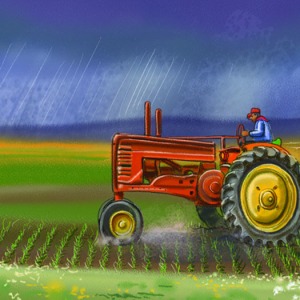 Plains: The plain region of the United States is called the Great Plains, which runs from Texas north to Oklahoma, Kansas, Nebraska, the Dakotas, and eastern Montana. The Great Plains are known for their extensive flat lands covered in tall grass, cattle ranches, and bison. Be careful here in the spring and summer – the Great Plains are located in Tornado Alley, where tornadoes happen most frequently!
Plains: The plain region of the United States is called the Great Plains, which runs from Texas north to Oklahoma, Kansas, Nebraska, the Dakotas, and eastern Montana. The Great Plains are known for their extensive flat lands covered in tall grass, cattle ranches, and bison. Be careful here in the spring and summer – the Great Plains are located in Tornado Alley, where tornadoes happen most frequently!
Peninsulas: Arbordale Publishing is located near a well-known peninsula –Charleston, South Carolina! Many of the first towns settled in the United States are located on peninsulas, as they provide easy access by water to ships delivering people and supplies. Jamestown, Virginia and Boston, Massachusetts were first built on peninsulas. The entire state of Florida is a big peninsula!
Volcanoes: The west coast of the United States is located in what is 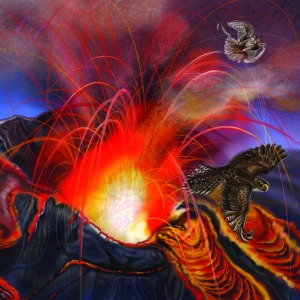 known as the “Ring of Fire,” an area where many volcanic eruptions and earthquakes occur due to the movement of the Earth’s tectonic plates. Active, potentially dangerous volcanoes in the United States include Kilauea Volcano in Hawaii, Mount St. Helens in Washington, Mount Hood in Oregon, Mount Shasta in California. While some of these volcanoes haven’t erupted in years, they are not considered dormant, meaning they could erupt at any time. A volcanic eruption would be an exciting sight to see, but be sure to keep your distance!
known as the “Ring of Fire,” an area where many volcanic eruptions and earthquakes occur due to the movement of the Earth’s tectonic plates. Active, potentially dangerous volcanoes in the United States include Kilauea Volcano in Hawaii, Mount St. Helens in Washington, Mount Hood in Oregon, Mount Shasta in California. While some of these volcanoes haven’t erupted in years, they are not considered dormant, meaning they could erupt at any time. A volcanic eruption would be an exciting sight to see, but be sure to keep your distance!
Islands and archipelagos: The most famous example of an island chain in the United States is Hawaii. Another is the Aleutian Islands in  Alaska. Since neither of these are especially accessible to the average Mackinac, Michigan; Whidbey Island, Washington; Mount Desert, Maine; Amelia Island, Florida; and Assateague Island, Virginia. Did you know that part of the biggest city in the United States is located on an island? Manhattan is surrounded by the Hudson River, the East River, and the Harlem River!
Alaska. Since neither of these are especially accessible to the average Mackinac, Michigan; Whidbey Island, Washington; Mount Desert, Maine; Amelia Island, Florida; and Assateague Island, Virginia. Did you know that part of the biggest city in the United States is located on an island? Manhattan is surrounded by the Hudson River, the East River, and the Harlem River!
Learn more about these landforms in Catherine Ciocchi’s book This Land is Your Land!
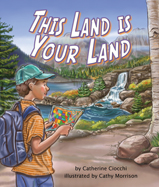


By: Arbordale Publishing,
on 6/9/2015
Blog:
(
Login to Add to MyJacketFlap)
JacketFlap tags:
author talk,
orangutan,
Featured Books,
animal ethology,
arbordale books,
Primate school,
reserch,
Children's Books,
writing,
Educational,
Add a tag
 Have you ever wondered what sparks an idea for a book?
Have you ever wondered what sparks an idea for a book?
Author Jennifer Keats Curtis talks with us about the process of writing Primate School and how one idea lead her to a deep study in animal behavior, feelings and thinking.
When I learned that orangutans were using iPads, my first thought was, Oh good, there’s hope for my mother. Ok, I’m kidding. My real thought was that despite extraordinary study and learning, there is so much about animals that we still don’t know.
As I set off to learn about orangutans and other primates for the nonfiction Primate School, I thought about how much I  love animals and want to understand them. I thought about my own connections with animals and my personal belief that animals have feelings and emotions. I believe that they feel joy and sadness, perhaps not in the same way that we do, but that they are conscious, sentient beings and I wish I could better relate and communicate with them. I think that we have missed a lot with animals in the past for fear of anthropomorphizing them.
love animals and want to understand them. I thought about my own connections with animals and my personal belief that animals have feelings and emotions. I believe that they feel joy and sadness, perhaps not in the same way that we do, but that they are conscious, sentient beings and I wish I could better relate and communicate with them. I think that we have missed a lot with animals in the past for fear of anthropomorphizing them.
I joyfully learned about how primates communicate with each other through verbal cues and behavior and how they express themselves, show happiness and love, and learn from each other and keepers. I loved learning about how primates connect to each other and to humans. I was fascinated to learn about aunting behavior among langurs and saddened to learn about the gibbons who had been raised as pets and had trouble relating to other gibbons.
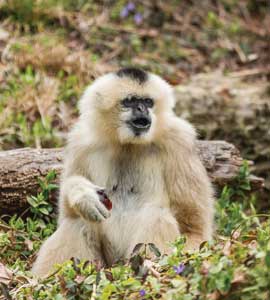 I wrote Primate School ecstatic to use what I’d learned from cognitive ethologists. Ethologists study animals in their natural settings and cognitive ethologists get to focus on the thinking process, including communication, culture, and learning. I embrace this concept and cannot get enough of what these scientists have to say. Even though that book is complete, I never want to stop learning about what primates and other animals think and feel, how they learn from us, and how we can learn from them. That is one of the main reasons that I write about animals for children.
I wrote Primate School ecstatic to use what I’d learned from cognitive ethologists. Ethologists study animals in their natural settings and cognitive ethologists get to focus on the thinking process, including communication, culture, and learning. I embrace this concept and cannot get enough of what these scientists have to say. Even though that book is complete, I never want to stop learning about what primates and other animals think and feel, how they learn from us, and how we can learn from them. That is one of the main reasons that I write about animals for children.
Award-winning nature author Jennifer Keats Curtis is frequently found among students and teachers, talking about literacy or conservation. In addition to Primate School, Salamander Season, the Animal Helpers series, Baby Owl’s Rescue, Kali’s Story, and Turtles In My Sandbox for Arbordale, some of her other recent titles include Osprey Adventure, Saving Squeak: A River Otter’s Tale, and Seahorses. Jennifer resides in Maryland, with her family and a wide variety of pets. Visit her website at www.jenniferkeatscurtis.com.
Learn more about Primate School and Jennifer’s other Arbordale books here!


By: Arbordale Publishing,
on 5/29/2015
Blog:
(
Login to Add to MyJacketFlap)
JacketFlap tags:
day in the deep,
light adaptations,
ocean hide and seek,
animals,
science books,
Educational,
octopus,
octavia,
Featured Books,
Science and World News,
science news,
Add a tag

One amazingly interesting creature is the octopus; this cephalopod can twist and turn its body into many shapes, suction to all types of surfaces, and use a cloud of ink to distract predators. This week, researchers uncovered the California two-spot octopus’s ability to sense light through its skin.
When the scientist shone a beam of light on the skin of an octopus the chromatophores (pigmented structures in the skin) expanded and the skin changed color. When the light was turned off, the chromatophores contracted again and the octopus was back to its original color. Why does this happen? Scientists determined that the octopus’ skin has proteins called opsins that work with the chromatophores for this reaction to occur.
(Read more about the experiments here)
Changing colors is nothing new in the octopus species; they can become red with anger, or transparent in sunlight. The more tools the creature has to camouflage itself the better chance for survival in the wild depths of the ocean where predators are abundant.
To learn more about the octopus or how other animals use light in the depths of the ocean here is a short underwater reading list!
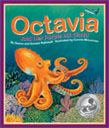
Octavia and her Purple Ink Cloud
Octavia Octopus and her sea-animal friends love playing camouflage games to practice how they would hide from a “big, hungry creature.” Octavia, however, just cannot seem to get her colors right when she tries to shoot her purple ink cloud. What happens when the big, hungry shark shows up looking for his dinner? This creative book introduces basic colors along with the camouflage techniques of various sea animals; a great introduction to marine biology!
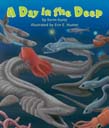 A Day in the Deep
A Day in the Deep
Travel deep into the ocean way below the surface and you’ll encounter some creatures you never knew existed! This book takes you on a journey through the dark depths of the sea towards the ocean floor. Most ecosystems need sunlight, but deep in the ocean where the sun doesn’t shine animals have adapted some very interesting ways to see, protect themselves, and eat. Discover the unique habitats, adaptations, and food chains of these deep -sea creatures.
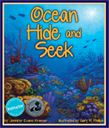 Ocean Hide and Seek
Ocean Hide and Seek
The sea is a place of mystery, where animals big and small play hide and seek! Can you imagine a shark hiding in the light? What about a clownfish in plain sight? Don’t believe it? Then, sink into the deep blue sea with Jennifer Evans Kramer and Ocean Hide and Seek! Surround yourself with the vibrant ocean illustrations of Gary R. Phillips. The ocean is an old, old place, and the exotic animals in the depths have learned to adapt to their surroundings to survive. Can you find the creatures hidden on every page? Or will you, too, be fooled by an ancient, underwater disguise?


By: Arbordale Publishing,
on 3/19/2015
Blog:
(
Login to Add to MyJacketFlap)
JacketFlap tags:
book awards,
Polar Bears,
children's book week,
children's choice,
zoo animals,
Award Winners!,
Featured Books,
kali's story,
vote polar bear,
voting open,
Children's Books,
Add a tag
 It is such an honor to have Kali’s Story: An Orphaned Polar Bear Rescue selected as a finalist for the CBC Children’s Choice Awards! But kids, now we need your help!
It is such an honor to have Kali’s Story: An Orphaned Polar Bear Rescue selected as a finalist for the CBC Children’s Choice Awards! But kids, now we need your help!
Vote for Kali!!
//www.dogobooks.com/polls/3-4th-gr-book-of-the-year-2015/iframe


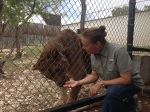
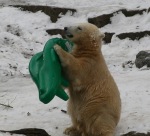




The pet industry is a billion dollar business and many Americans share homes with four-legged friends, or aquatic creatures. Each day people are taking care of their animals and enriching their lives just like the people featured in the Animal Helpers series.
In a recent interview, Author Jennifer Keats Curtis shared with Arbordale how zookeepers and rehabilitators have influenced her interactions with her own dog. Just like animals in zoos, pets need enrichment. Even the smallest fish can be trained.
So, here are a few training experiments that you can do at home to enrich the lives of your pets.
Dogs
Your dog might have hi-five down or may love a game of fetch, but what about when you are away?
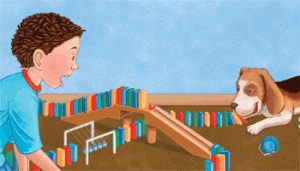 Play a game of find and seek with treats or even your dog’s food. When you dog is in another room place small treats or a little food in simple hiding spaces around a room. Have your dog use it’s nose to seek out the food. For the first few times you may have to help your dog out, but they will quickly get the hint.
Play a game of find and seek with treats or even your dog’s food. When you dog is in another room place small treats or a little food in simple hiding spaces around a room. Have your dog use it’s nose to seek out the food. For the first few times you may have to help your dog out, but they will quickly get the hint.
Take learning one step further with puzzles. Many local pet stores carry treat puzzles where dogs must use their nose to get the reward. This enrichment will entertain and tire out your pooch!
Cats
Cats may be a little harder to please, but they are easily trainable too! A happy cat has many toys to bat around, or even a 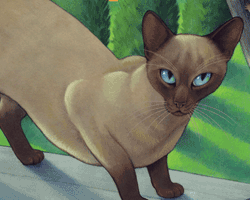 fishing pole with a furry ball at the end can entertain a cat for hours, but many people have trained their cat to do much more.
fishing pole with a furry ball at the end can entertain a cat for hours, but many people have trained their cat to do much more.
Start out small with treats or a piece of food and hold it just above the cat’s nose. Lift the treat until the cat sits down. Repeat this several times and give the cat a treat as soon as it sits. Soon the cat will be siting each time you lift the treat.
Many cats scare easily so be sure to reward your cat and not stress it out. Scaredy cats are very difficult to train.
Fish
You can train your pet fish to recognize when it’s dinnertime. Flash a light and then  feed the fish. Do this over several days feeding the fish the same amount of food each time and see what happens. Some fish put their mouths out of the water; others may swim in a pattern. This is a fun experiment in animal behavior just like Pavlov’s Dogs.
feed the fish. Do this over several days feeding the fish the same amount of food each time and see what happens. Some fish put their mouths out of the water; others may swim in a pattern. This is a fun experiment in animal behavior just like Pavlov’s Dogs.
Do you want to learn how zookeepers entertain and train big cats, sharks or even a gorilla, check out Jennifer Keats Curtis’ series Animal Helpers and coming soon Primate School!


 As the sun begins to set, arctic animals scurry to prepare for six months of darkness and cold. Tuktuk the collared lemming is almost ready for the long winter night – all he needs is warm fur to line his nest. When one furry kamik (boot) slips off an Inuit driver’s sled, Tuktuk is in luck! But as he drags it home, Putak the polar bear, Aput the arctic fox, and Masak the caribou eye this little lemming’s prize and want it for their own. Can Tuktuk outwit the other animals and convince them that one furry kamik is no good for anyone bigger than a lemming?
As the sun begins to set, arctic animals scurry to prepare for six months of darkness and cold. Tuktuk the collared lemming is almost ready for the long winter night – all he needs is warm fur to line his nest. When one furry kamik (boot) slips off an Inuit driver’s sled, Tuktuk is in luck! But as he drags it home, Putak the polar bear, Aput the arctic fox, and Masak the caribou eye this little lemming’s prize and want it for their own. Can Tuktuk outwit the other animals and convince them that one furry kamik is no good for anyone bigger than a lemming? Little Woolly leaves her mother behind as she chases a toad down to the river. When the glacial ice breaks, she is swept away in the rumbling, rolling water. Now alone, the mammoth calf struggles to survive. She must sneak past cave lions, bears, saber-toothed cats and humans. Exhausted and afraid, she must even hide from stormy weather as she fights her way back to her herd. How can she find them? Will she ever get back?
Little Woolly leaves her mother behind as she chases a toad down to the river. When the glacial ice breaks, she is swept away in the rumbling, rolling water. Now alone, the mammoth calf struggles to survive. She must sneak past cave lions, bears, saber-toothed cats and humans. Exhausted and afraid, she must even hide from stormy weather as she fights her way back to her herd. How can she find them? Will she ever get back? Dangerous animals from all over the world gather for the Most Dangerous Animal of All Contest. Snakes, spiders, sharks . . . who will the winner be? Deadly poison, huge teeth, razor -sharp horns, and fearsome feet are just a few of the ways that animals kill. Predators mean to kill. Prey simply defend themselves. And yet, the unexpected most deadly-animal doesn’t mean to harm at all!
Dangerous animals from all over the world gather for the Most Dangerous Animal of All Contest. Snakes, spiders, sharks . . . who will the winner be? Deadly poison, huge teeth, razor -sharp horns, and fearsome feet are just a few of the ways that animals kill. Predators mean to kill. Prey simply defend themselves. And yet, the unexpected most deadly-animal doesn’t mean to harm at all! Someone stole a cake from the cake contest—who could it be? Twelve animal bakers are potential suspects but Detective Duck uses his deductive reasoning skills to “quack” the case. After all, the thief left hairs behind so the thief wasn’t a bird. Follow along as he subtracts each suspect one at a time to reveal just who the culprit was. This clever story will have children of all ages giggling at the puns and the play on words. Key phrases for educators: subtraction, deductive reasoning, animal adaptations, puns/play on words.
Someone stole a cake from the cake contest—who could it be? Twelve animal bakers are potential suspects but Detective Duck uses his deductive reasoning skills to “quack” the case. After all, the thief left hairs behind so the thief wasn’t a bird. Follow along as he subtracts each suspect one at a time to reveal just who the culprit was. This clever story will have children of all ages giggling at the puns and the play on words. Key phrases for educators: subtraction, deductive reasoning, animal adaptations, puns/play on words. Imaginations will soar from the forest floor, up through the canopy and back down again, following the circle of life. The jungle comes alive as children learn about the wide variety of creatures lurking in the lush Amazon rainforest in this clever adaptation of the song “The Green Grass Grew All Around.” Search each page to find unique rainforest bugs and butterflies hiding in the illustrations. Delve even deeper into the jungle using sidebars and the “For Creative Minds” educational section, both filled with fun facts about the plants and animals, how they live in the rainforest and the products we use that come from the rainforest.
Imaginations will soar from the forest floor, up through the canopy and back down again, following the circle of life. The jungle comes alive as children learn about the wide variety of creatures lurking in the lush Amazon rainforest in this clever adaptation of the song “The Green Grass Grew All Around.” Search each page to find unique rainforest bugs and butterflies hiding in the illustrations. Delve even deeper into the jungle using sidebars and the “For Creative Minds” educational section, both filled with fun facts about the plants and animals, how they live in the rainforest and the products we use that come from the rainforest. From the “crocodile’s dentist,” to the “mongoose spa,” Animal Partners takes a whimsical look at symbiotic relationships of animals large and small. Although many animals live in groups of the same kind, here you will learn how some animals form unique partnerships with different species. After all, don’t we all need a little help from our friends?
From the “crocodile’s dentist,” to the “mongoose spa,” Animal Partners takes a whimsical look at symbiotic relationships of animals large and small. Although many animals live in groups of the same kind, here you will learn how some animals form unique partnerships with different species. After all, don’t we all need a little help from our friends?




 Home in the Cave – by Janet Halfmann, illus. by Shennen Bersani
Home in the Cave – by Janet Halfmann, illus. by Shennen Bersani Little Red Bat – by Carole Gerber, illus. by Christina Wald
Little Red Bat – by Carole Gerber, illus. by Christina Wald Deep in the Desert – by Rhonda Lucas Donald, – by Rhonda Lucas Donald, illus. by Sherry Neidigh
Deep in the Desert – by Rhonda Lucas Donald, – by Rhonda Lucas Donald, illus. by Sherry Neidigh And Coming in spring of 2017 Bat Count: A Citizen Science Story
And Coming in spring of 2017 Bat Count: A Citizen Science Story
 skin that goes from a flying squirrel’s front legs to its back legs and allows it to glide through the air a remarkable adaptation. The fact that katydid ears are on their legs is pretty amazing, too!
skin that goes from a flying squirrel’s front legs to its back legs and allows it to glide through the air a remarkable adaptation. The fact that katydid ears are on their legs is pretty amazing, too!

 captured all 24 species in the wild. Readers can watch Brady Barr comb the jungles, forests, and rivers seeking out reptiles on his Nat Geo Wild show Dangerous Encounters with Brady Barr that airs on Saturdays at 10:30.
captured all 24 species in the wild. Readers can watch Brady Barr comb the jungles, forests, and rivers seeking out reptiles on his Nat Geo Wild show Dangerous Encounters with Brady Barr that airs on Saturdays at 10:30.
































